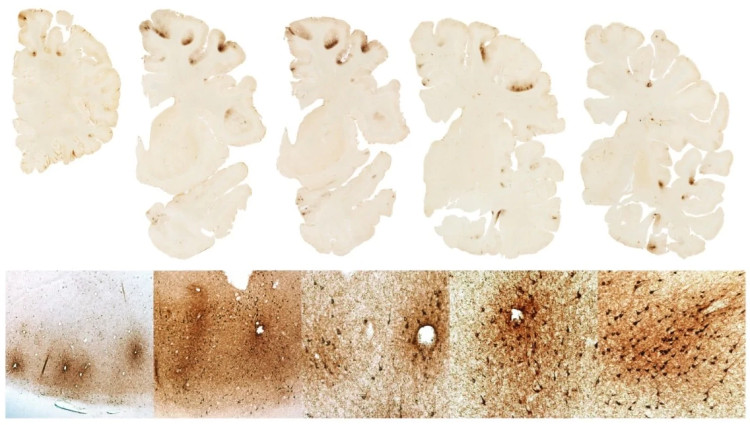Detection of protein that supports the diagnosis of chronic brain damage disease
On September 26, scientists from Boston University and the VA Boston Medical System published the results of a study in the journal PLOS ONE, which discovered a protein that could support a diagnosis Chronic brain damage (CTE) often occurs in athletes, veterans and people with brain injury.
The study found an increase in the concentration of CCLL11 protein in dead- brained CTE players, but it was not found in the brains of healthy people or Alzheimer's patients.

Classes of brain tissue cutting. (Source: dailymail.co.uk).
So far, CTE has only been diagnosed through the brain tissue of the dead, so the results of the study could help researchers come closer to developing a method for diagnosing CTE disease for living people because CCLL11 protein can be found in cerebrospinal fluid.
The discovery of CCLL11 is an important 'biomarker' but needs further study. Scientists hope that this will be a potential step to develop better treatment and prevention methods for CTE syndrome.
CCLL11 may later be used in combination with 'biomarkers' and other treatment procedures such as tomography (PET) to diagnose CTE syndrome in living people.
CTE syndrome is associated with recurrent brain injury, which can lead to depression, confusion and memory loss. The tremors and bumps on the head area that are repeated over a long period of time will form a wound in the brain and this is the reason CTE is formed. Most CTE patients can have violent acts against others or commit suicide.
The study showed that the symptoms of this syndrome are similar to Alzheimer's disease and that doctors have spent a lot of effort to distinguish Alzheimer's and CTE patients from each other.
- Protein supports the treatment of degenerative brain cells
- Smart paper guessing disease
- Finding new ways to treat brain damage
- New findings about Alzheimer's disease help early diagnosis and increase healing
- 8 causes of 'brain fog' syndrome
- Protein discovery helps to erase painful memories
- Latest model of Alzheimer's causes
- Regular snacks will affect the brain
- Chronic obstruction coordination:
- Discovered the mechanism of spreading Parkinson's disease in the human brain
- Find new ways to erase painful memories
- The mysterious disease is only diagnosed after the patient has died, because the doctor needs to cut their brain
 Green tea cleans teeth better than mouthwash?
Green tea cleans teeth better than mouthwash? Death kiss: This is why you should not let anyone kiss your baby's lips
Death kiss: This is why you should not let anyone kiss your baby's lips What is salmonellosis?
What is salmonellosis? Caution should be exercised when using aloe vera through eating and drinking
Caution should be exercised when using aloe vera through eating and drinking